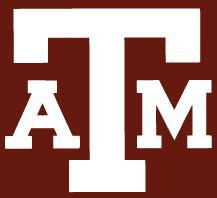Introduction
The University ofTexas Medical Branch-Galveston was established in 1891. It is a state-owned medical center and the Medical Branch has nearly 100 campus- and community-based clinics.
The University ofTexas Medical Branch-Galveston was established in 1891. It is a state-owned medical center and the Medical Branch has nearly 100 campus- and community-based clinics.
4-year semimodern. First and second years: The Integrated Medical Curriculum (IMC), in which 197 studentsareenrolled,utilizesafullyintegratedbasicscience core followed by a multidisciplinary approach organized by organ systems. This tract emphasizes self-directed active learning, stimulated by actual clinical cases. Various educational methods are utilized including small-group, problem-based learning, formal lectures, laboratories,demonstrations,andcomputer-assistededucation. Early community-based clinical experiences are provided. The social, cultural, and ethical issues of the medical profession and the introduction of the student to clinical medicine are addressed across the curriculum in thePracticeofMedicinecourseinYearsIandII.Thefinal weeks of the second year are devoted to the great syndromes, which are integrated case studies of complex multi-organ problems. Third year: All students have to complete the standard clinical rotations plus 1 in family medicine. Fourth year: Required clerkships are neurology, senior surgery, emergency medicine and advanced cardiac life support, radiology, dermatology, and an acting internship selective. The remaining 20 weeks are electives and are taken at approved U.S. or international sites.StudentsapplytotheILTandareselectedatrandom.

Minority admissions: The school has an active recruitment program, a postbaccalaureate program, and a summer medical school familiarization program. Other degree programs: Combined MD-PhD programs are available in the basic sciences and medical humanities.
The MCAT and a minimum of 90 semester hours of college work, including 1 year of English, the basic premedical science courses, and 1 semester of calculus are required. The most significant selection factors are intellect, achievement, character, interpersonal skills, and motivation. In evaluating candidates, consideration is given to the academic record, MCAT scores, preprofessional committee evaluations, and the personal interview. Only American citizens or applicants with permanent visas are considered. Preference is given to residents of Texas.
The grading systems for the required core courses are Honors, High Pass, Pass, and Fail. For elective courses the system is Pass/Satisfactory/Fail. Teaching: The basic sciences are taught at the Clinical Sciences Buildings. John Sealy Hospital (the principal clinical service and teaching facility), 6 other hospitals, and 2 outpatient clinics make up the Medical Branch Hospitals Complex. Other: Many other institutions including the Shriners Burn Institute and the Marine Biomedical Institute are available for teaching and research. Library: The Moody Medical Library houses about 250,000 books and subscribes to biomedical journals. Housing: Limited dormitory rooms are available.
This website and its associated pages are not affiliated with, endorsed by, or sponsored by this school.
StateUniversity.com has no official or unofficial affiliation with University of Texas.